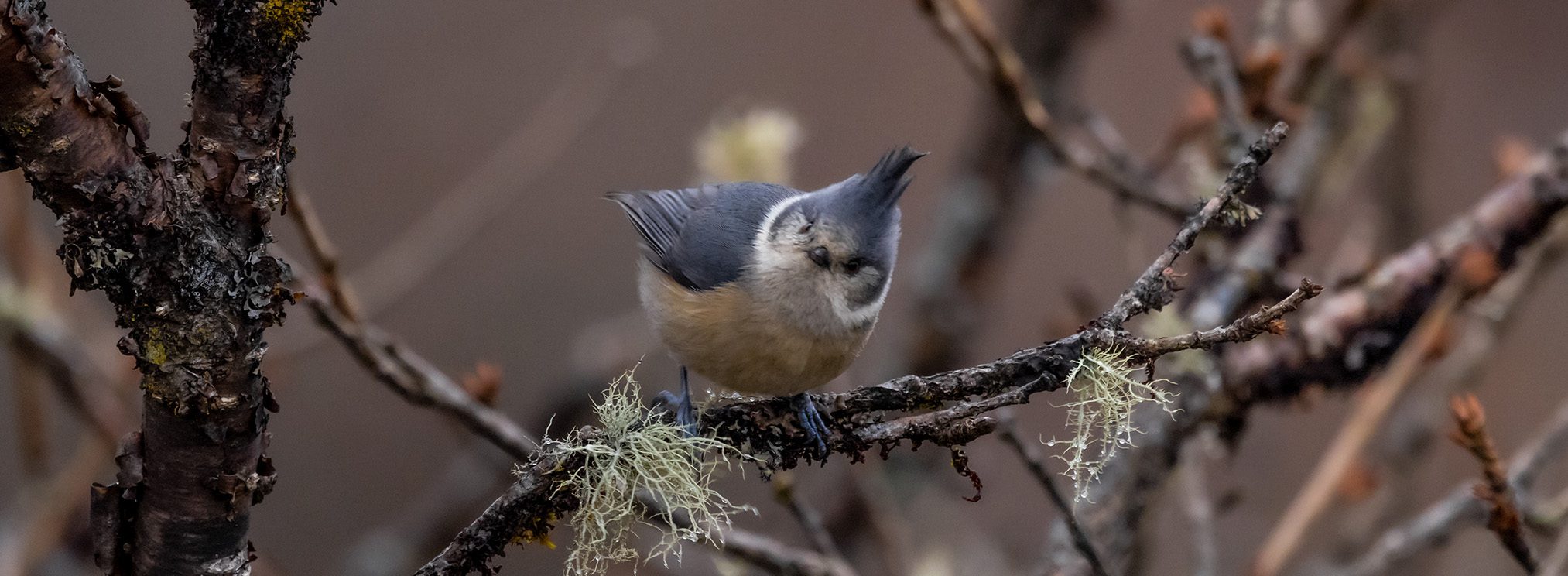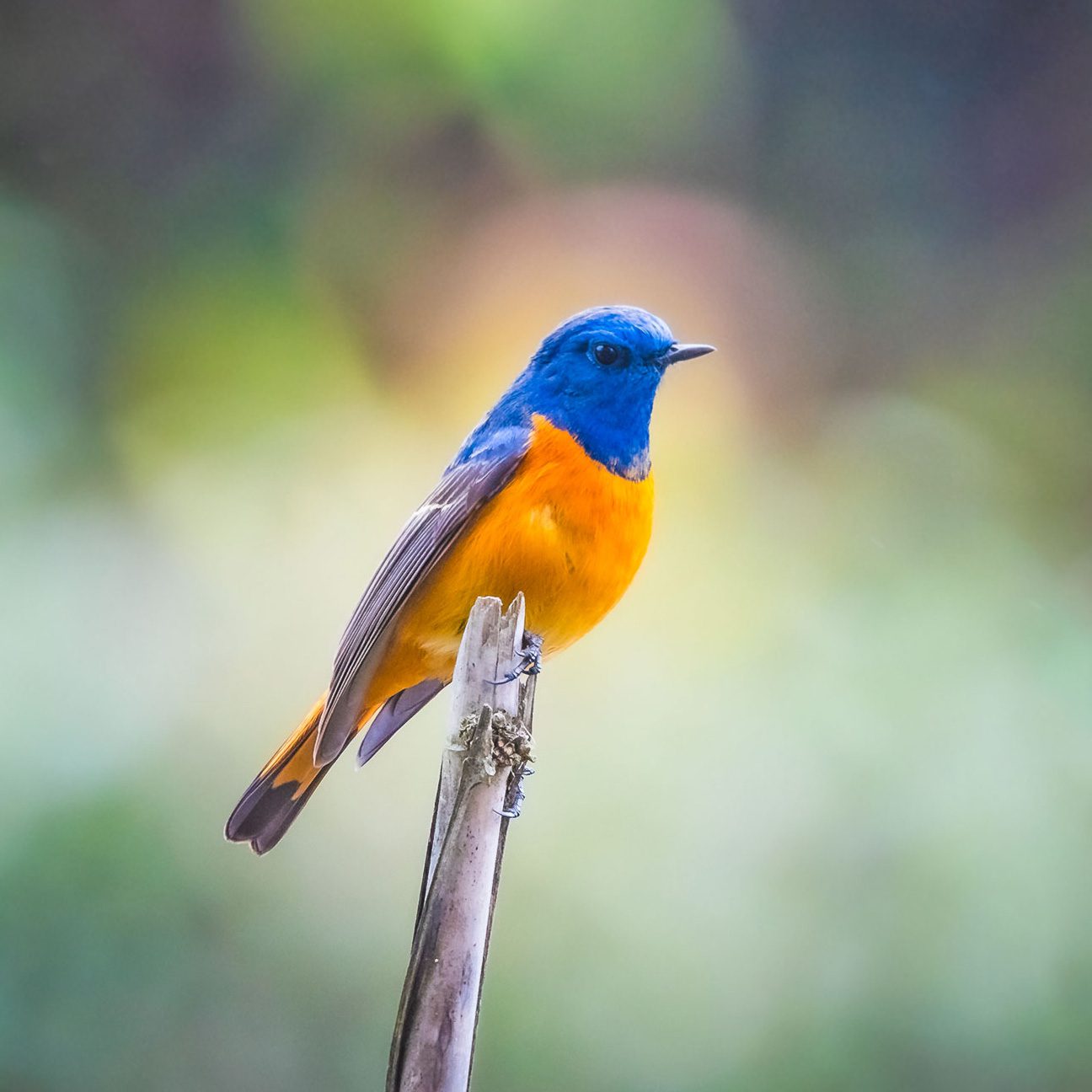






Pangolakha:
Pangolakha Wildlife Sanctuary is located in the pristine forest of Eastern Himalayas. Located in the eastern Sikkim, this park lies in the Pangolakha range along the Silk route. The steep terrain of the Sanctuary, starting from an elevation of 1300 meters that goes all the way up to 4000 meters. Pangolakha has typical alpine-temperate-subtropical vegetation with high altitude lakes. The dominant flora in the park is Rhododendron, Silver Fir, Juniper along with Bamboo thickets. The unique supports a large variety of faunal life. Due to the varied altitudinal zone and habitat types, the Pangolakha wildlife sanctuary is home to some remarkable species. The sanctuary is also home to the State Animal of Sikkim, the Red Panda. Also, there are few wetlands which are breeding grounds for few migratory birds during summer. There are a number of rare birds found in the park like Blood Pheasant, Himalayan Monal, Satyr Tragopan, Great Parrotbill, Fulvous Parrotbill, Fire-tailed Myzornis, Fire-tailed Sunbird and many others. This park also hosts a number of elusive mammals. It is also a home to the shy and rare Musk Deer. Himalayan Goral can easily be seen here during your drives.
Lava:
Lava (also known as Lava Bazar) is a town in near Neora Valley National Park in the state of West Bengal. It is a rich biological zone with Red Panda in the pristine undisturbed natural habitat with rugged inaccessible hilly terrain and rich diverse flora and fauna. Neora Valley and Lava are very popular among birdwatchers with a total of 258 bird species. It is one of the best sites in India to see rarities such as the Rusty-bellied Shortwing, Hill Myna and Dark-throated Thrushes.
Latpanchar:
Latpanchar situated at the highest point of the Mahananda Wildlife Sanctuary at an altitude of 4200 ft., has some mesmerizing views of the Teesta River. The varying altitudes of the region, from the terai in the south to the mountains in the north is the prime reason for its rich diversity within a small region, and the overwhelming abundance and variety of birdlife as well as other wildlife. This is also the breeding site for the Vulnerable to Near Threatened Rufous-necked Hornbill which starts in April. The forests around the village are home to various species of birds, including the rare Rufous-necked Hornbill, Scarlet Minivet, and Blue-throated Barbet.
Accessibility by Train: Bagdogra
Accessibility by Air: Bagdogra
Day 1: 07/04/24:
Bagdogra- Pangolakha
Received at Airport. Transfer to homestay by non AC car. Lunch enroute.
Check-In followed by a briefing with your assigned naturalist – Unwind, Relax and Explore the property after a long day of travel. Orientation on Reserve and wildlife stories.
Evening Birding around homestay. Dinner.
Excepted Species: Assam Macaque, Tarai Gray Langur, Bhutan Giant Flying Squirrel, Himalayan Striped Squirrel, Kalij Pheasant, Common Green Magpie, Green-backed Tit, Black Bulbul, Striated Laughingthrush, Chestnut-crowned Laughingthrush, Rufous Sibia, Whiskered Yuhina, White-tailed Nuthatch, Grey-winged Blackbird, Golden Bush Robin, Grey Bushchat, Dark-sided Flycatcher, Little Pied Flycatcher, Large Niltava, Green-tailed Sunbird, Dark-breasted Rosefinch.
Day 2: 08/04/24:
Pangolakha
Early morning drive with our naturalist through coniferous forest. Here we look for alpine species of birds and mammals. Breakfast on field.
Rest or birding in camp. Lunch at the Lodge.
Afternoon drive to Zuluk. Zuluk is famous for its magnificent landscape. This session will be for high altitude wildlife spotting and landscape photography.
Back to camp for Dinner.
Excepted Species: Asiatic Black Bear, Himalayan Serow, Yellow-throated Marten, Masked Palm Civet, Himalayan Monal, Eurasian Hobby, Black Eagle, Himalayan Buzzard, Yellow-bellied Fantail, Yellow-billed Blue Magpie, Black-faced Laughingthrush, Silver-eared Mesia, Bar-throated Siva, White-browed Fulvetta, Stripe-throated Yuhina, Brown Parrotbill, Brown-throated Treecreeper, White-browed Shortwing, Chestnut-belied Rock Thrush, Fire-tailed Sunbird, Alpine Accentor, Scarlet Finch.
Day 3: 09/04/24:
Pangolakha
Today is all about cloud forest. Early morning drive with our naturalist to Zuluk. Here we look for high alpine species of birds and mammals.
Back to camp for breakfast. Rest or birding in camp. Lunch at the Lodge.
Afternoon drive to Lungthung. Lookout for high altitude wildlife spotting and landscape photography.
Back to camp for Dinner.
Excepted Species: Himalayan Musk Deer, Himalayan Brown Goral, Takin, Moupin Pika, Blood Pheasant, Himalayan Monal, Snow Partridge, Mountain Imperial Pigeon, Northern Raven, Red-billed Chough, Eurasian Wren, Rufous-necked Snowfinch.
Day 4: 10/04/24:
Pangolakha- Lava
Morning birding in camp.
Post breakfast transfer to Rongli. Change car and move to Lava.
Check-in and lunch.
Evening birding at Lava.
Dinner.
Excepted Species: Rufous-throated Partridge, Satyr Tragopan, Crimson-breasted Woodpecker, Darjeeling Woodpecker, Bay Woodpecker, Golden-throated Barbet, Hodgson’s Hawk Cuckoo, Lesser Cuckoo, Ashy Wood Pigeon, Mountain Imperial Pigeon, Black Eagle, Mountain Hawk Eagle.
Day 5: 11/04/24:
Lava
Morning birding in Lava.
Lunch.
Evening birding at Lava.
Dinner.
Excepted Species: Dark-throated Thrush, Rufous-gorgeted Flycatcher, White-gorgeted Flycatcher, White-browed Bush Robin, White-tailed Robin, Yellow-browed Tit, Striated Bulbul, Chestnut-headed Tesia, Chestnut-crowned Warbler, Black-faced Warbler, Black-faced Laughingthrush, Chestnut-crowned Laughingthrush, Streak-breasted Scimitar Babbler, Scaly-breasted Wren-babbler, Pygmy Wren-babbler, Rufous-fronted Babbler, Black-headed Shrike Babbler, White-browed Shrike Babbler, Rusty-fronted Barwing, Rufous-winged Fulvetta, Brown Parrotbill, Fire-breasted Flowerpecker, Fire-tailed Sunbird, Maroon-backed Accentor, Dark-breasted Rosefinch, Red-headed Bullfinch, Gold-naped Finch and many other rarities.
Day 6: 12/04/24:
Lava- Latpanchar
Post breakfast transfer to Latpanchar.
Check-in and lunch.
Evening birding at Latpanchar.
Dinner.
Excepted Species: White-bellied Erpornis, White-spectacled Warbler, Grey-bellied Tesia, Rufous Woodpecker, Black-throated Prinia, Yellow-browed Warbler, Yellow-vented Warbler, Green-billed Malkoha, Long-billed Thrush, Little Bunting, White-naped Yuhina, Little Forktail, Slaty-blue Flycatcher, Abbott’s Babbler, Mountain Bulbul, Blyth’s Shrike-Babbler, Blue-naped Pitta, Asian Emerald Cuckoo, and Hodgson’s Frogmouth.
Day 7: 13/04/24:
Latpanchar- Bagdogra
Morning birding at Latpanchar.
Post breakfast transfer to Bagdogra.
Journey ends.
Excepted Species: Oriental Pied-Hornbill, Pale-headed Woodpecker, Russet Bush Warbler, Yellow-billed Blue-Magpie, Little Spiderhunter, Pin-tailed Green-Pigeon, Silver-eared Mesia, Himalayan Cutia, Coal Tit, Black-throated Tit, Speckled Piculet, Grey-crested Tit, Pin-striped Tit-Babbler, Green Cochoa, Black Baza, Short-billed Minivet, Tricolored Munia, Slaty-bellied Tesia, Crimson-browed Finch, Rufous-breasted Bush-Robin, Thick-billed Warbler, White-browed Piculet, and Scaly-breasted Cupwing.
